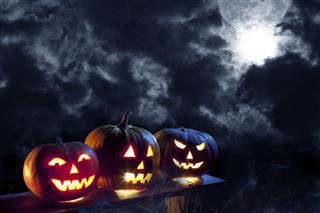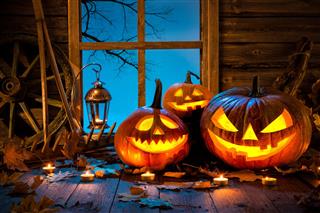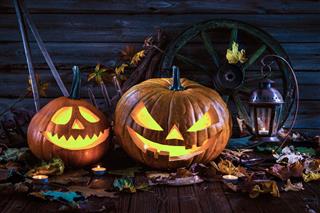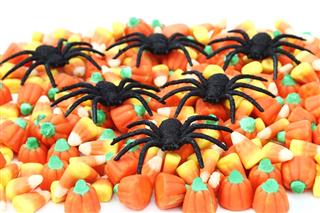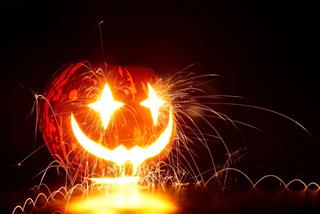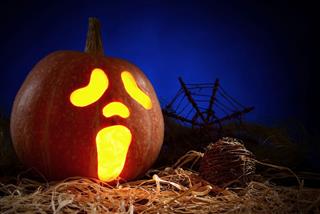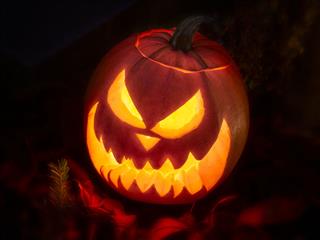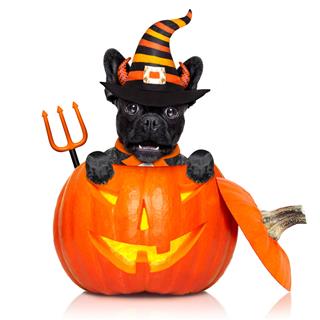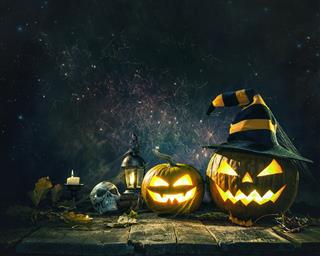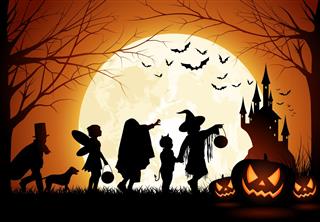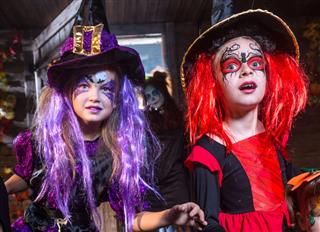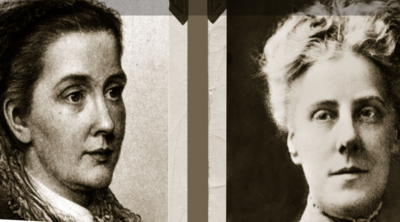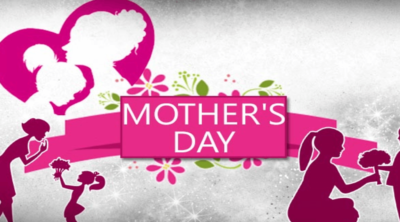
With Halloween around the corner, it’s time to revisit the beliefs that led Halloween to be what it is today. We celebrate it to honor the dead. We celebrate it to mark the end of harvest. The chilly winters await us and so does a long holiday season. Why do we celebrate Halloween the way we do?
Halloween is around 6000 years old. It is derived from the ancient Celtic festival called Samhain celebrated on October 31, the day before the Celtic New Year began. It was believed to be the day when spirits of the dead visited the living world.
Amidst the fun and frolic of Halloween, is its true significance forgotten? Halloween is about trick-or-treating, guising, wearing scary costumes, lighting bonfires, making pumpkin lanterns, and telling and listening to horror stories. How are these traditions related to the festival?
The term Halloween is an abbreviated form of ‘All-hallow-even’ that comes from All Hallows’ Day, also known as the All Saints’ Day. It was regarded as a religious day in the European Pagan culture. Pope Gregory III and Gregory IV shifted the Christian Feast of the All Saints’ Day to November 1. Today, All Saints’ Day follows Halloween. During the 9th century, both were celebrated on the same day.
The Celtic festival Samhain marked the end of harvest season. It was believed that the boundary between the living and dead worlds dissolved on the night of October 31 and that spirits of the dead visited the living world. People feared the spirits. To seek protection from them, people wore scary costumes and lit bonfires.
Halloween and the Jack O’Lantern
A pumpkin lantern is made by placing a lit candle inside a carved pumpkin. The pumpkin symbolizes the Stingy Jack of Ireland. Here’s his story.
He agreed to free the Devil under the condition that he would not trouble him for a year and not claim his soul if he were to die. The following year, Jack tricked the Devil again. He asked him to climb a tree and trapped him there. In return for freeing him, he asked for a favor. It was decided that the Devil would not bother him for ten more years.
When Jack died, he was neither accepted in heaven nor could the Devil claim his soul. The Devil cursed Jack. He was condemned to roam around, on earth during nights. He was given a burning coal as his guiding light. Jack carved out a turnip, placed the burning coal inside it and used it as his lantern. The Irish called him Jack of the Lantern or Jack O’Lantern.
Turnips, potatoes and even beets began to be used to make lanterns. Immigrants brought the tradition to America, where pumpkins were chosen. The tradition continues, and has become an important part of Halloween celebrations the world over. Pumpkins are carved into comical or fearful faces and placed at the doorsteps of houses. Originally, carved pumpkins were also associated with the harvest season in America. By the late 19th century, they were linked with Halloween.
Why are Orange, Black, and Purple the Colors of Halloween?
Black and orange are regarded as the traditional colors of Halloween. Over the years, even purple, green and red have become popular as Halloween colors. They are used heavily in decorations and have become a part of Halloween party themes. People dress up in these colors. Gifts and supplies are wrapped in these colors. Let’s see how they are linked with Halloween.
Orange is associated with pumpkins, autumn, and fire. Since Samhain was celebrated in autumn and orange leaves and gourds are elements of this season, orange came to be linked with Halloween. Orange also represents strength and endurance which might have a link with the wars between Julius Caesar and the Celtics.
Black is linked with death, fear, night, and silence. Since Halloween was believed to be the day when the boundaries between the living and dead worlds blurred, the festival came to be linked with death and hence the color black. Black also represents bats, black cats, witches, and vampires which are a part of Halloween lore.
Purple represents the supernatural, the spiritual, and the mystic. Halloween elements like witches, vampires, and spirits of the dead add that mystic element to the festival, making purple a Halloween color.
Red, the color of blood and evil, and green, the color of goblins and monsters are regarded as Halloween colors owing to their symbolism.
How Black Cats, Spiders, Owls, and Bats are associated with Halloween
We see them in Halloween costumes and masks. They become themes for treats and party food. Why are they a part of Halloween celebrations?
Black cats were considered to be reincarnations of living beings. In the Middle Ages, people believed that witches turned themselves into black cats. That’s how black cats were linked with Halloween.
Spiders have long been associated with haunted houses and graveyards. This ‘haunt’ element links them with Halloween. During the Middle Ages, spiders were regarded as companions of witches. According to a superstition, seeing a spider on Halloween meant that the spirit of a loved one was watching over you.
Bats and Owls are attracted to bonfires lit on the Halloween night. And that’s how they are linked with the festival. Bonfires were a part of Samhain traditions. Bonfires lit during the nights attracted insects. Bats and owls came to prey on them. As Samhain evolved into Halloween, bats and owls came to be associated with it.
According to an old myth, a bat flying into a house on Halloween meant that the house was haunted. Bats have been a part of the vampire lore, and especially so after the discovery of vampire bats in the 16th century. This has strengthened their association with Halloween.
Why are Apples associated with Halloween?
Candy apples are a common Halloween treat. Bobbing for apples is a fun game played for Halloween, which includes lifting apples floating in water with your mouth, without using your hands. Traditionally, unmarried women played this game. It was believed that the first one to lift an apple would find her love soon.
Around the time of Samhain, there’s a Roman festival celebrated to honor Pomona, the goddess of fruit trees. She was also regarded as the goddess of fertility. An apple is her symbol and hence the association of apples with Samhain and also Halloween.
Why Trick or Treat?
It was believed that spirits of the dead visit our world on the Halloween night. Years ago, there was a superstition that they would come disguised as beggars and go door to door asking for money during Samhain. It became a custom to not let them return empty-handed.
Even before trick-or-treat, the tradition was followed in Great Britain and Ireland, where children and poor people would go door to door, pray for the dead in those families and receive food in return. Back then, the tradition was called souling. Trick-or-treating during Halloween is believed to have existed in Scotland in 1895 when the tradition was to visit households asking for food and money. Sometime in the early 20th century, trick-or-treating came to America and spread west to east.
Today, kids dressed in scary or funny costumes visit houses in their neighborhood, asking for treats. At each door, they say “trick or treat” which means “give us a treat or we will play a trick on you!” Since the 1950s trick-or-treating is a Halloween tradition in many parts of the world.
Halloween in Different Cultures
In Ireland, people dress up like creatures from the underworld. Barmbrack is important in the Irish tradition. It is a kind of fruit bread. There’s a tradition to bake cakes with a ring, rag, or a coin placed in them. Whoever gets the ring is believed to find his love soon; finding a rag foretells poverty while finding a coin indicates otherwise.
A game called Puicini is also a part of the Irish Halloween traditions. In this game, a blindfolded person chooses a plate from several others. The food in that plate determines his life in the following year. Fireworks during the preceding month are a prominent feature of the Halloween celebrations in Ireland.
In Scotland, houses were protected with candle lanterns. If the evil spirits got past the lanterns, it was a custom to leave the house and spare it for the spirits for one year. Until recently, trick-or-treating was not known to the Scottish. Children dressed in scary animal costumes and pretended to be evil spirits. They went guising to houses in the neighborhood and received offerings from homeowners.
On the Halloween night, Austrians leave food and light a lamp on the dinner table to greet souls of the dead. The Belgians too, light candles in memory of the dead. The Czechoslovakians place chairs by the fire for spirits of the dead to attend their gatherings.
In China, Halloween is known by the name Teng Chieh. They have a tradition to place food in front of the photographs of their deceased loved ones. Bonfires and lanterns are meant to serve as guides for the spirits on their way to our world. In Hong Kong, Halloween is known as Yue Lan or Festival of the Hungry Ghosts. They believe it’s the time when spirits of the dead visit the living world.
American expats celebrate Halloween on a grander scale. Hong Kong Disneyland and Ocean Park host annual shows for them. Influenced by the American pop culture, the Japanese have started celebrating Halloween only recently. Decorations are limited to tourist attractions. Costume parties are a private affair and trick-or-treating is not commonly practiced.
Halloween is limited to only some parts of Philippines. The Filipinos regard November 1 as the Day of the Dead and observe it on a grand scale. October 31 which is Halloween is not a public holiday for them.
Alla helgons dag is what Halloween is called in Sweden. It is celebrated in the week following October 31. For them, it’s the time to remember their departed loved ones.
In Latin America, Mexico, and Spain, Halloween is a three-day celebration to remember the dead. Houses are decorated to greet spirits of the dead family members. Food of their choice is prepared and family members gather to remember their loved ones. In some families, there’s a custom to gather near the graves of the deceased.
Halloween became an American holiday only in the 19th century. It was a custom in North America to seat an unmarried woman in front of a mirror in a dark room. It was believed that her husband-to-be would appear in the form of an image in the mirror. Seeing a skull meant that she would die before marriage.
Today things have changed. Trick-or-treating, bonfires, and parties are integral to Halloween celebrations. Halloween is the second most popular holiday in the United States. In some parts of Central and South America, Halloween is popular, while in others it is not.
In Colombia and Chile, children dress up and visit houses in their neighborhoods, asking for treats. Teenagers and adults attend costume parties. In Brazil, Halloween celebrations are limited to only some schools.
Halloween in the United Kingdom is believed to have a Pagan origin. During the Puritan times, celebrating Halloween was forbidden by law. Influenced by the Americans, the English started celebrating it in the 20th century and trick-or-treating, costume parties, and apple bobbing became a part of their Halloween traditions. The festival is celebrated in other countries like Netherlands due to American influences.
Australians have never found Halloween much relevant to their culture. They have stayed away from this festival for long. It’s only in the last few years that Halloween has started gaining some popularity there.
In France, Halloween is regarded as an American holiday and isn’t linked with remembering the dead. Halloween in Africa is derived from the American Halloween. In most parts of the Indian subcontinent, Halloween is not celebrated.
In cultures where Halloween is celebrated, traditions change but only slightly. In most parts of the world, it is celebrated as a day to remember the dead or seek means to communicate with them. As it is linked with harvest, many of its traditions revolve around food and fertility.
Halloween is associated with a mixed bag of elements. There’s horror, there’s excitement; there’s fright, there’s fun. The celebrations today have taken an all-new form, but the underlying philosophy is almost the same.
